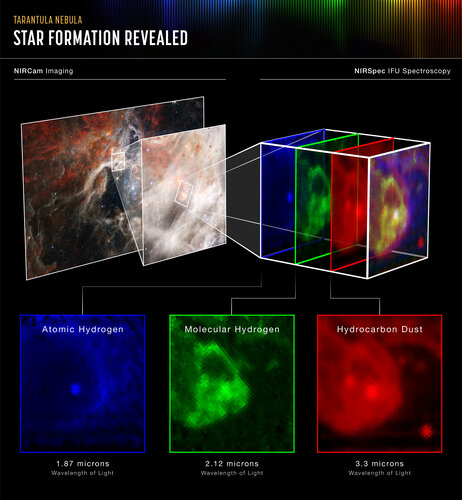

Access the video
To work in the near infrared, NIRSpec, and most of the rest of Webb, must operate at just 40 Kelvin (–233°C), kept cold by Webb’s iconic sun shield. This presents a great challenge when making precise scientific instruments. Different materials shrink at different rates when cooled down, and this produces slight distortions in the instrument that affect its accuracy.
“This was the most challenging thing and it is why Airbus decided to make this instrument mainly in silicon carbide. The base plate, most of the structures and the mirrors are all made out of silicon carbide,” says Ralf.
Silicon carbide is a ceramic material that, although difficult to work with, is extremely stable at low temperatures. By making most of the instrument out of it, thermal distortions could be all but eliminated. But it meant being completely certain of the design before manufacture started.
NIRSpec began as a block of silicon carbide in the so-called green-state, where the material is soft and can be worked. NIRSpec was then machined into shape in the same way as an artist works stone into a sculpture. All the holes and channels were drilled and once everything was ready, it was placed into a furnace to be ‘sintered’. This hardens the material, making it extremely hard to machine. So the team had to be completely certain of the design before they began manufacture.
“Working in silicon carbide was definitely a challenge, and I'm very proud that we succeeded in building it,” says Maurice. Partly as a result of their success, working with the material has now become something of a European specialty.



